Our national study of 645 players padel in France allowed us to deepen our knowledge of the practice of this sport in our country. We described the socio-demographic, anthropometric data and the profile of French players through a first article. We will now focus on the practice habits of padel French players.
Practice methods and types of terrain
In our study sample, the practice is preferentially done in private structures (75%) and much less in tennis clubs. Players play exclusively in private clubs in more than half of cases compared to only 22% only in tennis clubs. A minority prefer public land (association, departmental or leisure park).
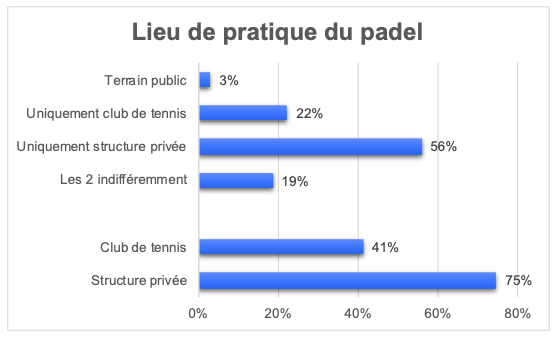
45% say they play only indoors compared to only 16% exclusively outdoors, while 39% play both indoors and outdoors. Women only practice outdoors more often (33%) compared to men (12%) (p<0,001).

The preferred playing surface is sanded synthetic turf (39%) but 46% of players play indifferently on both types of surface (with and without visible sand). We find a significant difference between the sexes on the preferred playing surface (p=0,005), the majority of women prefer a sanded surface while half of the men play on both types of surfaces.

Laterality and position on the field
We find a predominance of right-handers at 88%, which is comparable to the distribution in the general population..
Regarding position on the pitch, almost 80% of players have a side preference, with no difference between the sexes.
- Among right-handers, 41% prefer to play on the left side of the field, compared to 36% on the right side and 23% with no side preference.
- Logically, left-handers largely prefer to play on the right side (80%).
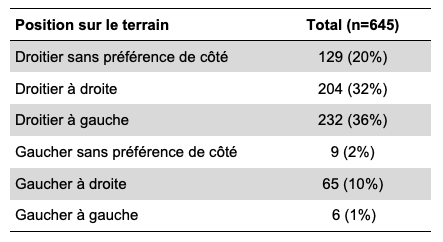
Warming up before playing?
Before playing padel, 8 out of 10 players do warm-ups. Warm-ups are brief and last less than 5 minutes for 55% of them. In fact, 45% say they warm up for less than 5 minutes while a third of players warm up for between 5 and 15 minutes.
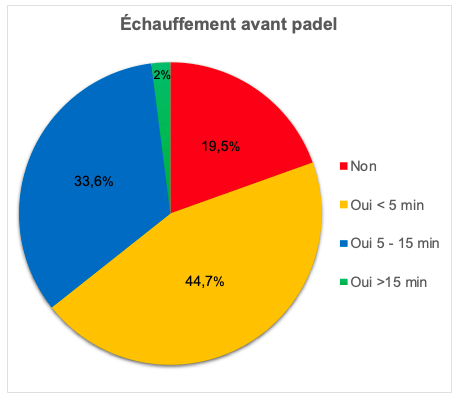
Only 12% of players warm up by running before using the racket.
A cold warm-up of the joints of the lower limbs is carried out by 32% of players and almost as many for the upper limbs. Gentle rallies without running are performed by more than half of the players while rallies of increasing intensity with running are practiced by 29% of the players.
In our study, a greater proportion of women did not do a warm-up (28%) compared to men (18%) without significant difference (p=0,13). The types of warm-up differ little, however..
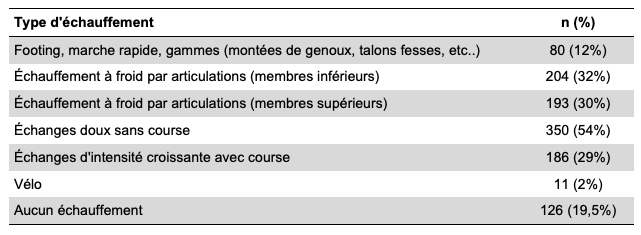
Stretching after padel
After practice, 7 out of 10 players do not do any stretching (69%). A notable difference exists between the sexes (p=0,009), with women incorporating stretching more often (42%) than men (29%).

Among the stretches performed, those of the anterior surface of the thigh (quadriceps) predominate, followed by the calf muscles, then the lumbar and shoulder muscles and finally the hamstrings.
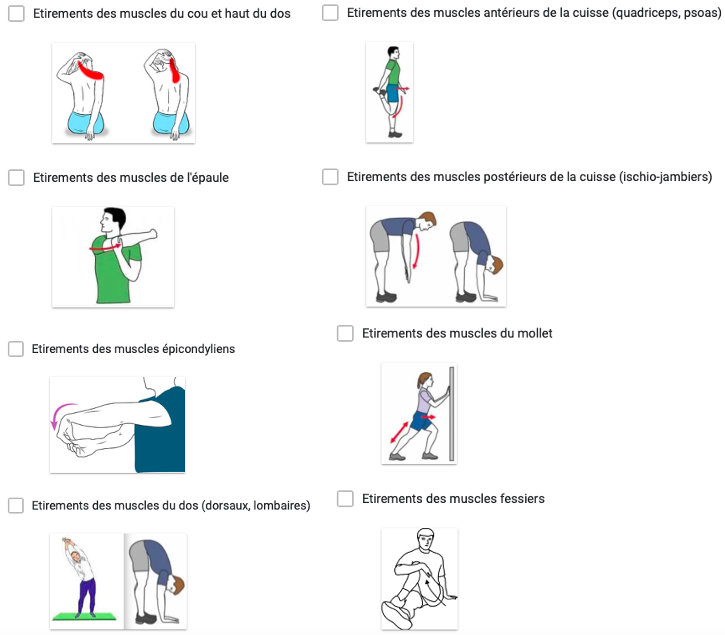
Almost three quarters of players are licensed by the FFT
72% of padel are licensed by the FFT, a third of which have a multi-racket license (created in 2023). This large percentage can be explained quite easily by the need to be licensed to participate in approved tournaments.
Passionate about football and tennis, I discovered the padel during my medical internship. Now a rehabilitation doctor specializing in sports medicine and traumatology, I share with you the detailed results of my national study on the epidemiology of sports injuries. padel in France.




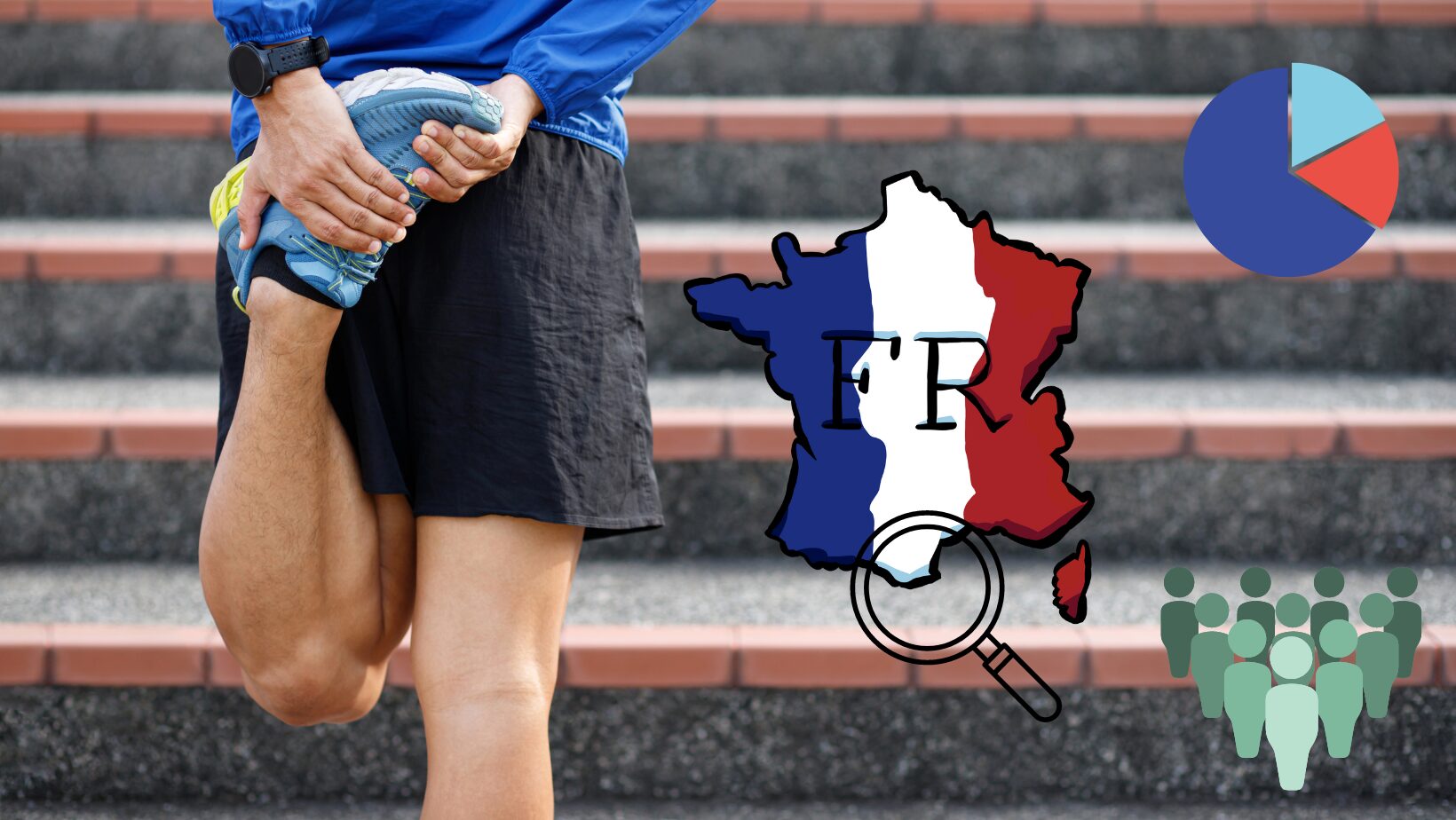
































































































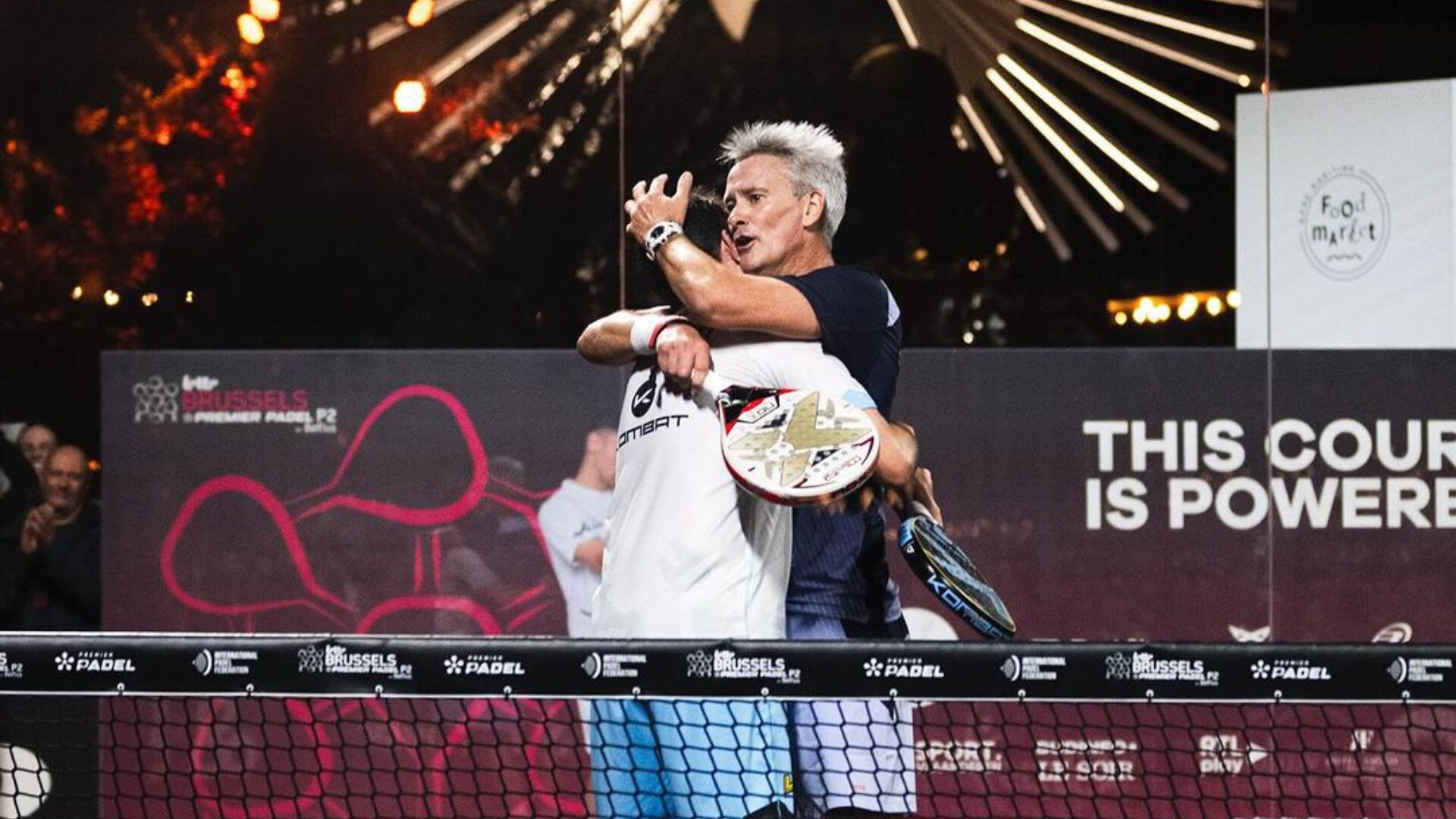 Big evening in Brussels with two seeded players on the mat, heckled number 1s…
Big evening in Brussels with two seeded players on the mat, heckled number 1s… A1 Padel – the French Open replaces the Mexican Open on the calendar
A1 Padel – the French Open replaces the Mexican Open on the calendar 4 Fiberglass Padel Courts for The Ville de Paris: a choice that looks to the future
4 Fiberglass Padel Courts for The Ville de Paris: a choice that looks to the future Guillaume Codron de Sud Padel : “A family project”
Guillaume Codron de Sud Padel : “A family project” Nallé Grinda: “Democratize the padel in the USA with PadelX "
Nallé Grinda: “Democratize the padel in the USA with PadelX " Simon Boissé: “We know that there are two nations in front of us”
Simon Boissé: “We know that there are two nations in front of us” Marie Maligo: “This period of frequent changes of partners was beneficial for me”
Marie Maligo: “This period of frequent changes of partners was beneficial for me” Gilles Moretton: “We will be able to put the padel at the level of tennis”
Gilles Moretton: “We will be able to put the padel at the level of tennis” Two P1000 doubled prize money approaching!
Two P1000 doubled prize money approaching! José Manuel Escin at the inauguration of Casa Padel DOS: “Finally, and thank you!”
José Manuel Escin at the inauguration of Casa Padel DOS: “Finally, and thank you!”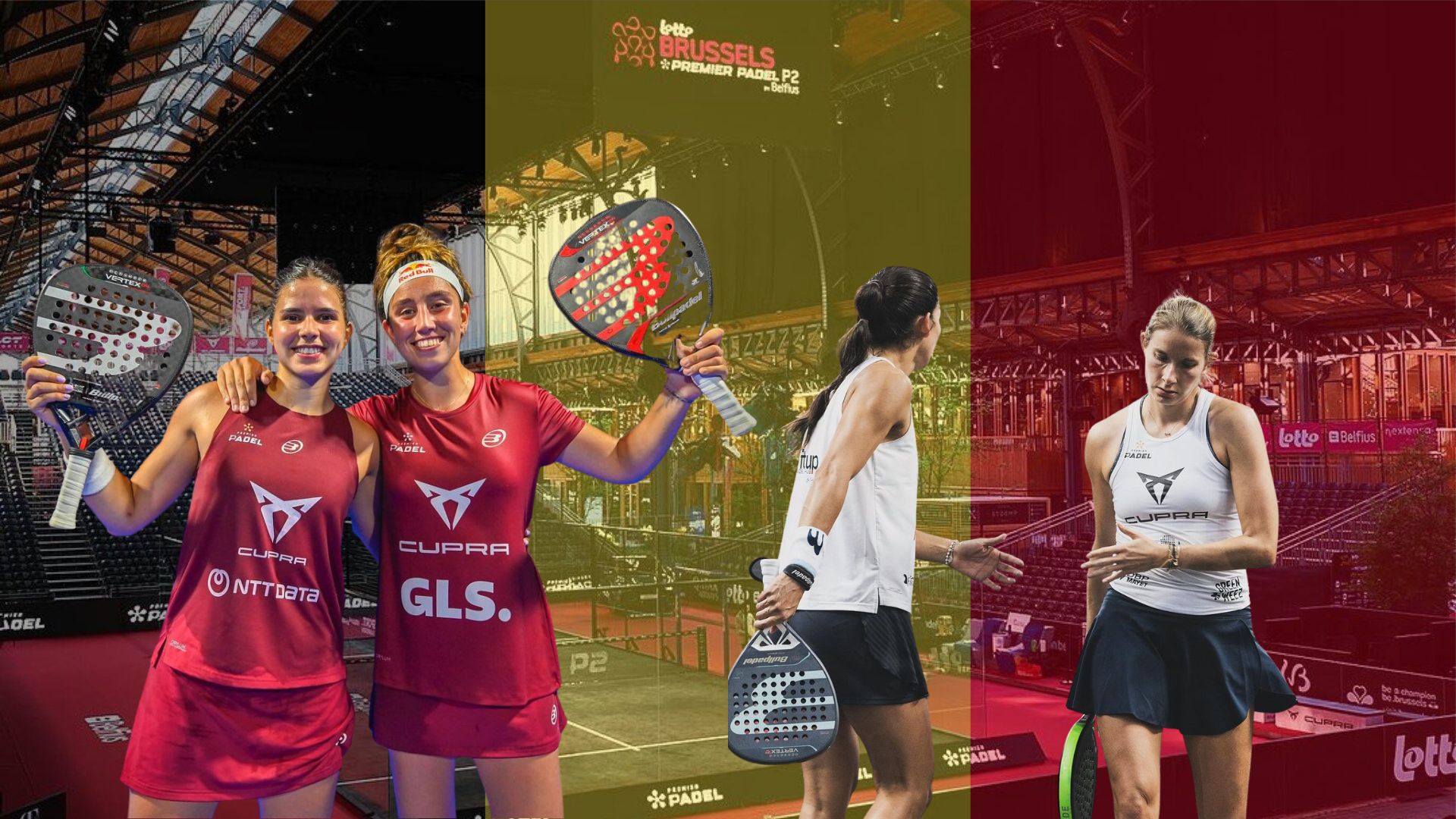 Brussels Premier Padel Brussels P2 – Collombon / Bidahorria falls against Brea / Gonzalez
Brussels Premier Padel Brussels P2 – Collombon / Bidahorria falls against Brea / Gonzalez Padel Score comes to Tahiti for American Express Padel Cup!
Padel Score comes to Tahiti for American Express Padel Cup! Do you know the Rafa Nadal Academy Tour?
Do you know the Rafa Nadal Academy Tour? Play at padel on his yacht? Possible for €233.000!
Play at padel on his yacht? Possible for €233.000! Our Top 10 training courses padel in France and Europe
Our Top 10 training courses padel in France and Europe At the heart of padel – Episode 25: Paul and Andoni answer your questions
At the heart of padel – Episode 25: Paul and Andoni answer your questions Tactical padel – What to do when faced with players who systematically stay at the bottom?
Tactical padel – What to do when faced with players who systematically stay at the bottom? The basic tactics of padel
The basic tactics of padel At the heart of padel – Episode 25: Paul and Andoni answer your questions
At the heart of padel – Episode 25: Paul and Andoni answer your questions At the heart of padel – Episode 23: defend the window well
At the heart of padel – Episode 23: defend the window well Prohibition on playing topless Padel : the reasons
Prohibition on playing topless Padel : the reasons FIP Tour – Going far from Europe, THE strategy to earn points!
FIP Tour – Going far from Europe, THE strategy to earn points! What is a good football player? padel ?
What is a good football player? padel ? “Lefties give me headaches when I play against them!”
“Lefties give me headaches when I play against them!” At the heart of padel – Episode 14: how to earn points in winter?
At the heart of padel – Episode 14: how to earn points in winter? A par 4 is always a winner...even if you manage to defend it!
A par 4 is always a winner...even if you manage to defend it! Carbon fiber VS fiberglass: what to choose?
Carbon fiber VS fiberglass: what to choose? How to effectively test a racket padel ?
How to effectively test a racket padel ? La padel to fight Parkinson's disease
La padel to fight Parkinson's disease Don't play with a cracked or broken racket, your body will thank you!
Don't play with a cracked or broken racket, your body will thank you! Michel Cymes: “The padel, physically, it’s serious!”
Michel Cymes: “The padel, physically, it’s serious!” Jeremy Gala: “Promote the padel among young people in Belgium remains a challenge”
Jeremy Gala: “Promote the padel among young people in Belgium remains a challenge” The French Touch Academy organizes its selection day Padel-Study
The French Touch Academy organizes its selection day Padel-Study Report on the detection and training of younger generations
Report on the detection and training of younger generations